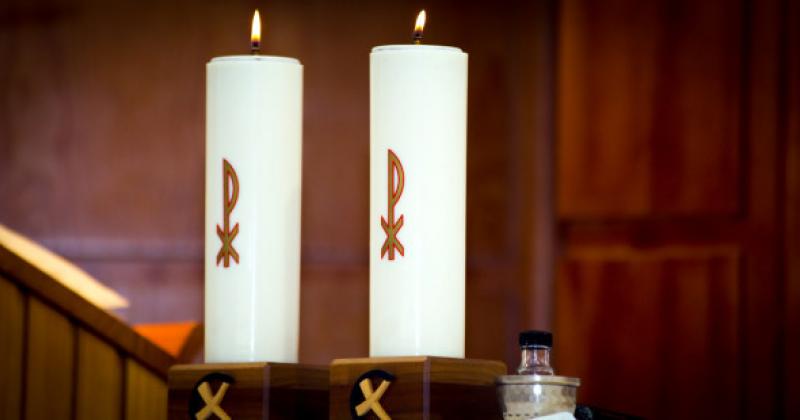Even though candles no longer have a practical purpose, the Church still requires their use in the liturgy.
With the exception of the Easter Vigil and the Advent Rorate Masses, in modern celebrations of the Mass, candles typically do not retain their former practical purpose of illuminating a darkened space. Yet, the General Instruction of the Roman Missal (GIRM) states, “The candles, which are required at every liturgical service out of reverence and on account of the festiveness of the celebration, are to be appropriately placed either on or around the altar.”
This raises the question: If candles serve no practical purpose, why does the Church insist on using them in the 21st century?
Candles have always been used in the Church in a symbolic way. From ancient times the lighted candle has been seen as a symbol of the light of Christ. This is clearly expressed at the Easter Vigil, when the deacon or priest enters the darkened church with the single Easter candle. Jesus came into our world of sin and death to bring the light of God to us. He expressed this idea clearly in the Gospel of John: “I am the light of the world; he who follows me will not walk in darkness, but will have the light of life” (John 8:12).
There are some who also point to the use of candles as a remembrance of the early Christians who celebrated Mass in the catacombs by candlelight. It is said that this should remind us of the sacrifice they made as well as the possibility that we too could be in a similar situation, celebrating Mass under threat of persecution.
Besides offering a meditation on light, candles in the Catholic Church are traditionally made of beeswax. According to the Catholic Encyclopedia, “The pure wax extracted by bees from flowers symbolizes the pure flesh of Christ received from His Virgin Mother, the wick signifies the soul of Christ, and the flame represents His divinity.” The requirement to use candles that are, at the very least partially made with beeswax, is still present in the Church on account of this ancient symbolism.
Read more: How beeswax candles opened up my eyes to the beauty of the Mass
Candles also have been used to add a more festive character to the celebration of Mass. According to the GIRM, “The altar is to be covered with at least one white cloth. In addition, on or next to the altar are to be placed candlesticks with lighted candles: at least two in any celebration, or even four or six, especially for a Sunday Mass or a Holy Day of Obligation, or if the Diocesan Bishop celebrates, then seven candlesticks with lighted candles.”
The number of candles is meant to remind the faithful that there is something different about a certain day and should spike the interest of those present.
In the end, while candles may seem antiquated and unnecessary, the Church believes that the natural beauty of candles can have a spiritual impact on our souls. The Church, in her wisdom, realizes the power behind the symbolism of using candles and how they can reignite a drooping spirit and fill it with the fire of divine love.
